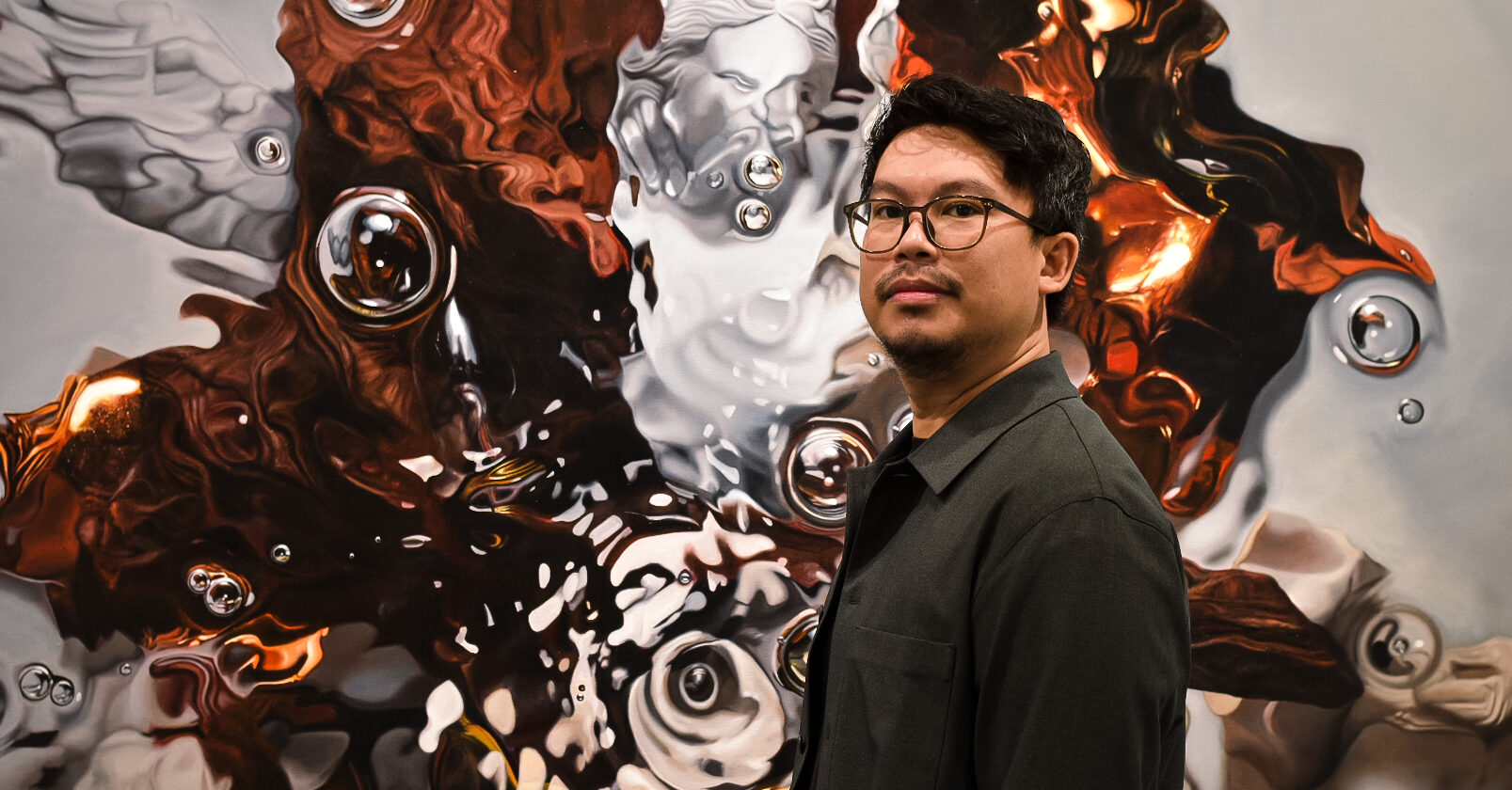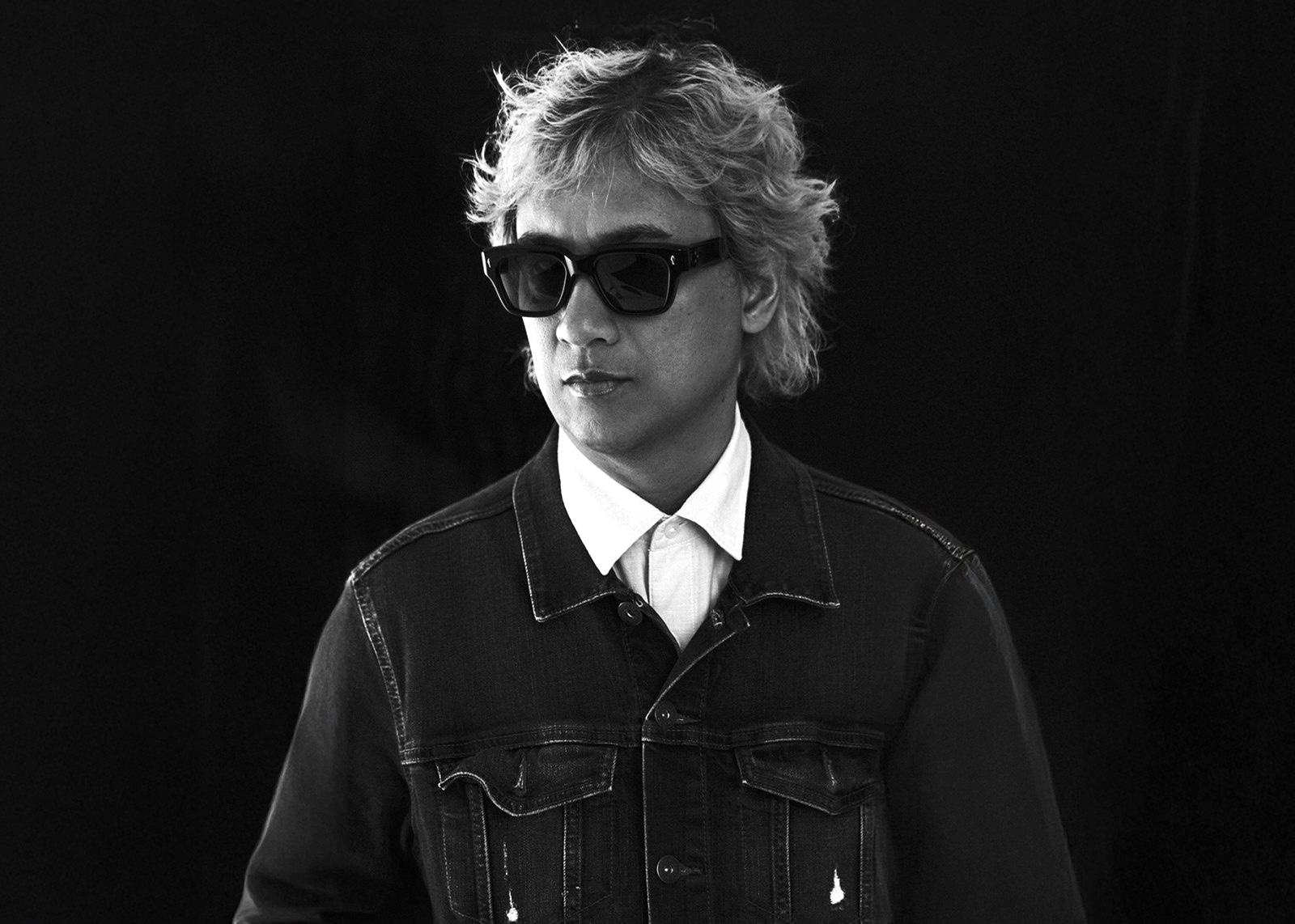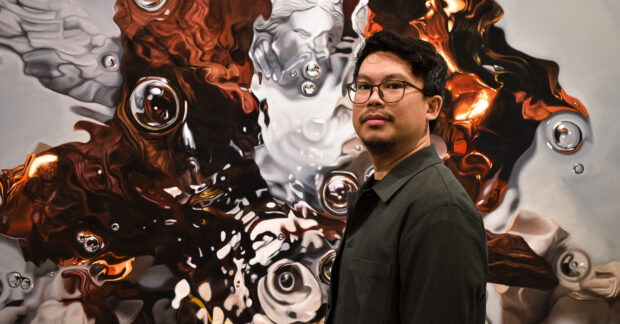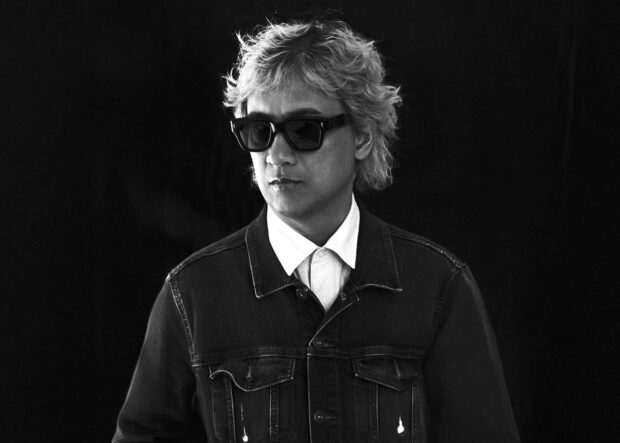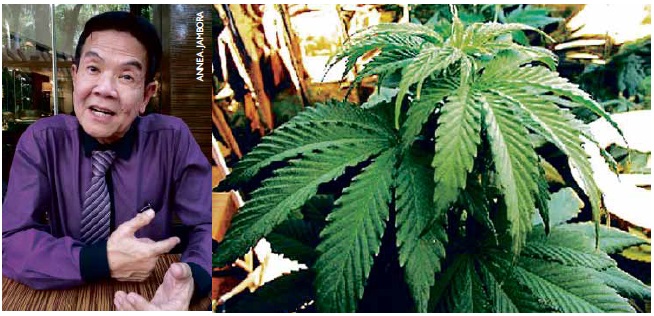
plant and mixed with carrier oil FILE PHOTO
MANILA, Philippines–The 5,000-year-old relationship of humans and weed, transitioning from medicinal to spiritual to recreational use, may now be coming full circle.
In the United States, medicinal cannabis is already legal in 23 states and the District of Columbia. In the Philippines, a group of cannabis advocates known as the Philippine Compassion for Cannabis Society (PCCS), composed of patients and parents of children who are in need of medical marijuana, is currently pushing for its legalization and regulation in the country.
House Bill No. 4477, or the Compassionate Use of Medical Cannabis Bill authored by Isabela Rep. Rodolfo Albano III, has been facing fierce opposition from a number of medical-doctor groups since last year. Meantime, members of the PCCS have been busy gathering signatures in support of the bill (there’s a Change.org petition, as well).
What exactly is medical cannabis? And why are parents—despite the risks and odds—pushing for its legalization?
Medical cannabis is oil extracted from the marijuana plant that is mixed with carrier oil. Of the more than 80 cannabinoids found in the plant, only two are closely studied: cannabidiol (CBD) and delta-9 tetrahydrocannabinol (THC). CBD is nonpsychoactive; THC is the one that gives the “high.” Both CBD and THC are said to offer a wide range of treatments, although medicinal formulation contains more CBD than THC (usually 25:1). They’re often referred to as CBD oil.
Pain management
Former Health Secretary Dr. Jaime Z. Galvez Tan, one of the bill’s most vocal supporters, said that CBD oils have been studied abroad and shown to be brain- and nerve-protective. That makes them highly efficient in pain management, including intractable pain and pain caused by cancer. It is also equally effective in treating some neurological conditions, such as epilepsy.
“They are not cures—there’s not enough study on that yet—but they are protective. All my patients need medical cannabis, but it is not accessible. If the law will, for example, allow CBD oil even only for cancer patients, that would be magnificent,” said Galvez Tan, whose 40-year study and research in medicinal plants culminated in a book launch of “The Best of 100 Philippine Medicinal Plants” last year, co-authored with Dr. Isidro Sia.
Galvez Tan believes that the road to recovery begins with alleviating a patient’s pain. There is spontaneous healing, he said, when quality of life is improved. And this can be achieved by administering CBD oil for certain medical conditions. Unfortunately, the Philippines lacks support—from the people and from government—for the bill to ever take off.
“I’d like medical cannabis to be approved… We have morphine that is more potent, and much more easily abused, that has been here for the last 40 years, and yet no one is abusing it,” he said.
In the US, studies are already underway to check for medical cannabis’ efficiency in treating PTSD (post-traumatic stress disorder), multiple sclerosis, chemotherapy side effects, brain injuries, glaucoma, rheumatoid arthritis, sleep disorders, eating disorders, Tourette’s syndrome, Huntington’s disease, dementia and AIDS wasting syndrome (weight loss). Preliminary work also indicates that it may slow a tumor’s growth.
A major turnaround for its acceptance in the US was when CNN’s chief medical correspondent Dr. Sanjay Gupta apologized, in 2013, for his earlier dismissal of medical cannabis. Gupta, who was President Obama’s first choice to become surgeon general when he took office in 2009, had a change of heart when he saw firsthand how CBD oil succeeded in treating children with epilepsy.
Acceptable form
Gupta wrote on CNN’s website that he has “come to the realization that it is irresponsible not to provide the best care we can as a medical community, care that could involve marijuana.”
And this is exactly how Galvez Tan feels: “You have to introduce it in an acceptable form (such as the CBD oil), work on it, and allow it to flourish.”
A local oilmaker, Juan Pedro (not his real name), who supplies CBD oil to people with various diseases (mostly different types of cancer) in Manila, said that prohibition would only lead to more ignorance. Pedro stumbled onto producing CBD oil three years ago, when a friend asked if he could help out a cancer patient.
Pedro read up on medical cannabis, concocted a brew mixed with carrier oil, and sent a small bottle to his friend. What followed next were orders for more, this time from friends of the cancer patient who was, apparently, responding well to the CBD oil.
Today, Pedro’s CBD oil is usually mixed with virgin coconut oil. For special requests, his CBD oil is mixed with truffle oil, olive oil, argan oil and crocodile oil. A kilo of marijuana will yield 80 ml of oil, he said. The leaves are soaked in a liquid solvent (alcohol), strained, then slow-cooked to boil until the solvent evaporates.
A 120-ml bottle contains the carrier oil of choice mixed with 2 percent CBD oil solution. Pedro offers three forms of CBD oil: oral, topical and inhalation (with vaporizer). He said his CBD oil profile is 40:1, producing less of the trippy effects of THC compared to most products available in the market today. The dosage of CBD oil will depend on a patient’s tolerance for THC.
The plant itself is harmless, Pedro said. It begins to develop its recreational compound only after a harvest. When the leaves dry up and are exposed to heat and zero humidity, a chemical process will occur that turns the THC into a psychoactive compound.
“That’s why we can develop a nonpsychoactive CBD oil. We can do this the right way—legalize it, regulate it, and study it. We can build new communities, new industries, and a new economy. Here is something that is sustainable. Every four or five months you’ll have a yield,” Pedro said.
CBD oil is one of the safest anti-inflammatory medicines, he continued, pointing out that it has a therapeutic index of 40,000:1 (therapeutic effect to the amount that causes toxicity).
“It starves the cancer, but not all cancers. I don’t want to call it a cure. But this could be an effective treatment… I’ve seen it stop a brain tumor, in a medication supervised by medical doctors,” Pedro said. “Finally, a medicine that has been illegal has the potential to do good to the body.” He is now on a mission to educate Filipinos on the benefits of CBD oil, saying that he has finally found his calling in life.
Galvez Tan said Pedro is taking huge risks by serving his clients; he is constantly on high alert in case his next client call will turn out to be an entrapment.
“We need to keep an open mind in order to move forward,” Galvez Tan said. “As doctors, we are always skeptical with new, untested things, but that does not mean we should dismiss as ineffective, something we haven’t even read up on yet.”
For more info, check out PCCS on Facebook. You can also read its petition on Change.org.

